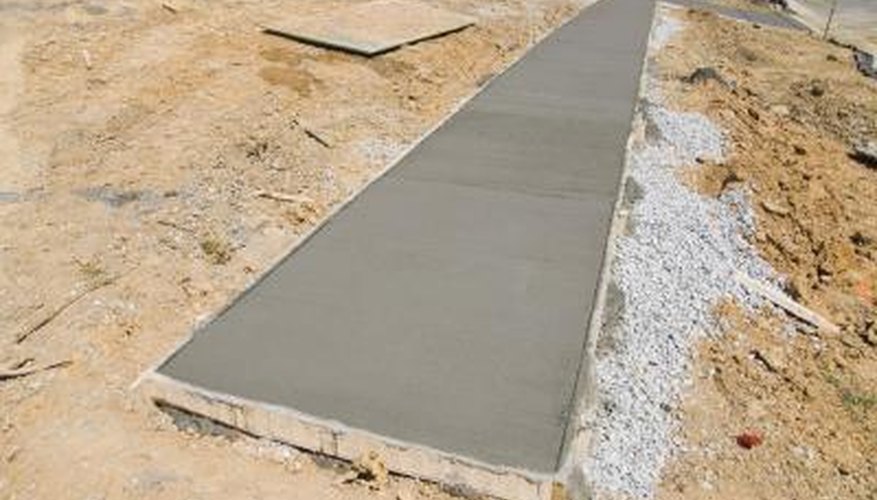Pouring a concrete slab isn't difficult, but it can be a bit tricky, especially if the ground where you are attempting to pour the slab is uneven. As long as the form in which you are pouring the cement, is level, what happens underneath the cement is not as critical. However, the earth needs to be solid and undisturbed or the cement can crack as its weight compacts the earth beneath it..

Measure the area, using a tape, where you want the slab to be placed.
Measure the depth of the slab in the deepest area, to determine the height of the concrete forms.
Buy wood in the largest width determined by your measurement of the slab height.

Screw the ends of the boards together to build a frame that's in the shape you want your slab to be. This frame, or form, will hold the liquid cement in place as it dries.
Leave overlapping edges when making the form so you have a surface to pound on when breaking down the form at the end of the project.
Level the form into the earth by digging gutters for it to lie in, at the areas where the earth is higher.
- Leave overlapping edges when making the form so you have a surface to pound on when breaking down the form at the end of the project.
- Level the form into the earth by digging gutters for it to lie in, at the areas where the earth is higher.

Check the level of the form by placing a long straight board diagonally across the frame. Then, place a level on the diagonal wood to check for sloping. Check the opposite diagonal, as well.
Pound pegs, or braces, into the ground along the outside of the form to keep the long pieces of wood from bowing out under the weight of the concrete when it is poured.
Dig a small trench on the inside of the form, all the way around, to form footers.
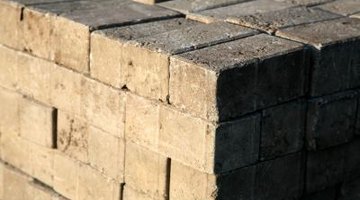
Lay bricks along the bottom of the framed area about 1 foot apart.
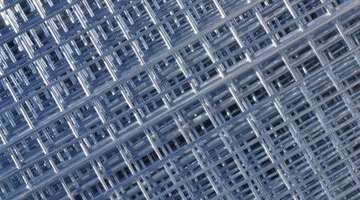
Lay wire mesh, cut to the size of the inside of the frame with your wire snips, onto the bricks.
- Lay bricks along the bottom of the framed area about 1 foot apart.
- Lay wire mesh, cut to the size of the inside of the frame with your wire snips, onto the bricks.
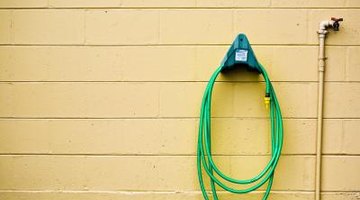
Dampen the ground inside the frame with a hose. Do not soak the earth.
Pour premixed concrete, or mix your own with a combination of Portland cement, sand and gravel. The amounts depend on the size of the slab and the texture of the cement you want. Consult with the clerk at the store for exact amounts.
Dump the cement into the frame, distributing it in piles all around the inside.
Tamp the concrete into the corners using a pointed trowel.
Spread the cement to all edges of the form, mounding it slightly higher than the form's top.
- Dump the cement into the frame, distributing it in piles all around the inside.
- Spread the cement to all edges of the form, mounding it slightly higher than the form's top.
Use a long straight 2-by-4 to drag across the top of the form to level the cement. Using a pendulum motion works best.
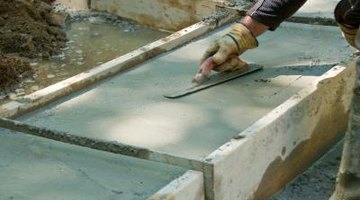
Smooth the top of the cement with the finishing trowel.
Allow the concrete to rest; level again, pushing off any moisture that has risen to the top.
Allow the cement to dry at least 24 hours.
Remove the bracing pegs from the sides of the frame.
Hammer the corners of the frame, breaking it away from the cement.
Dampen the slab with a hose twice a day for the next week so the cement cures slowly. Do not soak it.
TIP
If the form doesn't easily break down the day after pouring your cement, let the cement sit for a few more days in the form so you don't crack it while pounding apart the form. If your concrete slab is in direct sun, cover it during daylight hours with dark plastic --- after your concrete has a solid film across the top. This helps keep it shaded and adds moisture.
WARNING
Lime in concrete is a base and can burn your skin. Wear gloves, eye protection and long sleeves when working with concrete or cement mix. Cement sets up fast. Do not walk away from it once you start working with it. Do not pour cement on an intensely hot day.
